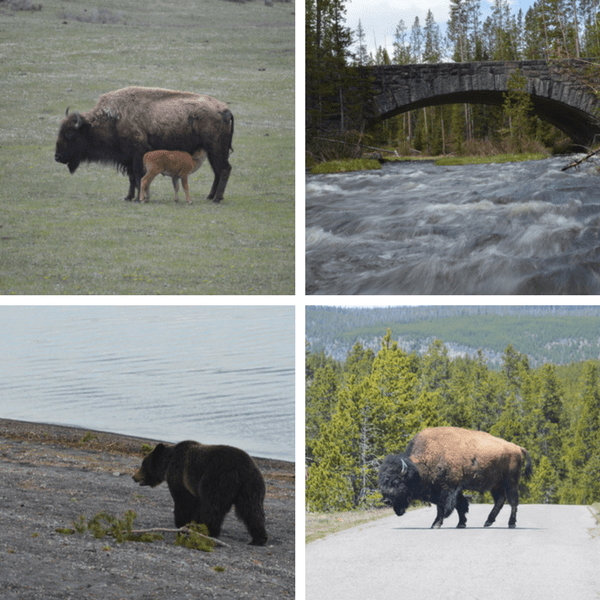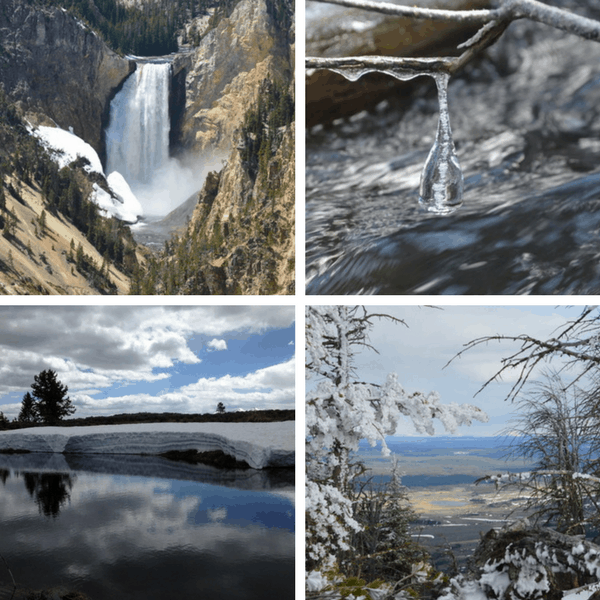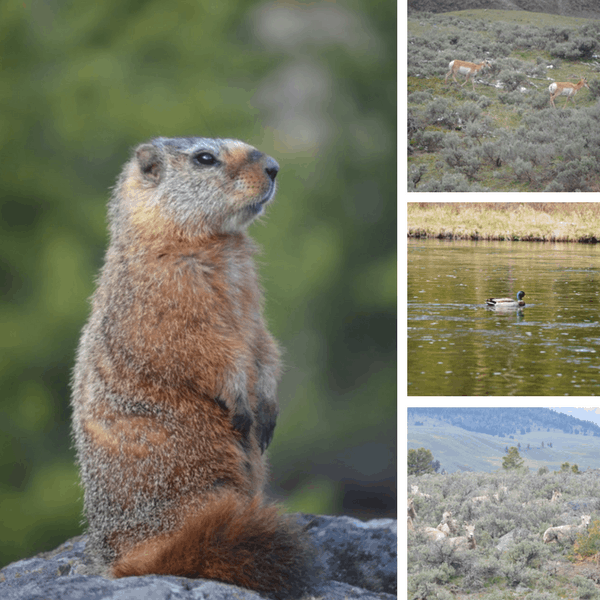It took just one trip to Yellowstone for my husband to discover that my beliefs about its weather are–in a word–delusional.
It began the night before our first vacation. The next morning, as soon as he finished his last exam of his senior year, we aimed to head west. That night, though, he was studying and I was packing. At some point, he walked away from his desk and into the living room, looked at what I’d assembled and asked, “Do you think we should bring our winter gear?”
I stared at him like he was an intruder who had just materialized in the center of our home. Winter gear? It was May. We were headed to Yellowstone. The weather was going to be perfect.
That’s what went on in my head. What I said was, “What winter gear?”
“Hats and gloves. Coats, maybe?”
I spared him the stuff about the perfect weather and just said, “No. I think we’ll be fine with our jackets and sweatshirts.”
“Okay,” he said, somewhat dubiously. “You’re the one who lived there. You would know.”
Suffice it to say, we were buying the last of the hats and gloves off the clearance rack at Kmart in Cody, Wyoming before we ever reached the park.
I had lived in Yellowstone. In May. I should have known. I did know. But memory—particularly where adoration is involved—is tricky.
My husband, who was quick to join me in my love for Yellowstone, was equally quick to take responsibility for making sure we always pack appropriate outerwear. Thanks to him, we have what we need to be warm and dry—no matter the time of year.
While I don’t always think rationally about the park’s weather, after a season’s employment and a lifetime of return visits, there are some things I can be trusted with, especially when it comes to what to expect, what to look for, and how to prepare.
What to Expect
Snow and Cold
Spring comes slowly to the mountains. So does the melting process. Snow can fall during any season in Yellowstone. And in spring, even warm days get cold when the sun goes down.
Green
Even with all the snow, the spring’s moisture and sunlight foster a verdant landscape, one much different from the fraying grasses of fall.
Slow Moving Traffic
The top speed limit is forty-five miles per hour. Park visitors regularly just stop in the middle of the road. And in the case of a bear sighting, they park haphazardly, barely getting off the road, in their haste to go get a look.
Leave plenty of time to get from one place to the next. It will probably take longer than you think it will.
Closed Trails
Spring is emerging-from-hibernation season, which means sleepy, hungry bears are leaving their dens in search of food. The National Park Service closes a lot of trails to create space for bears to wake up and eat and be what they are—wild animals.
While trail closures may seem like an inconvenience, Yellowstone is a national park, not a zoo. Bears are neither tame nor safe. If an area you were planning to hike in is closed for bear management, find something else to do. Also, carry bear spray and learn how to use it.
People | Lots of People.
In 1981, the year my family first went to Yellowstone, park visitors numbered two and a half million. Last year that number was over four million.
The park hasn’t grown. There are no additional roads. The number of hotels, restaurants, and trails is about the same. There are just more people using them.
Taking a trip to Yellowstone means sharing—the roads, the boardwalks, the trails—not only with wildlife, with people. If you are expecting to get out into the wild without seeing other humans, it might be a good idea to adjust your expectations.
What to Look For
Red dogs
While more commonly known as baby bison, they are, indeed, red. After a hard, hungry winter and just over forty week gestation, bison give birth between March and May. The spring landscape is dotted with little red bison.
Marmots
Because they usually begin hibernation by late summer, spring and early summer are the best time to see these relatively large rodents.
Wildlife
Beyond the red dogs and the marmots, there are adult bison, elk, bighorn sheep, mule deer, pronghorn, chipmunks, ravens, ducks, and bears.
Bears
Grizzly bears. Black bears. Males. Mamas with twins. Maybe even mamas with triplets.
How to Prepare
Buy a trail guide-book. A Ranger’s Guide to Yellowstone Day Hikes and Yellowstone Trails: A Hiking Guide are our favorites.
Learn about—and be prepared to follow—bear safety and wildlife distance protocol.
Buy or rent bear spray. Practice using it.
Make reservations. Park hotels often book up months in advance. Campgrounds fill early in the day.
Plan to picnic. There is freedom in not having to plan your itinerary around the next meal.
Accept (or maybe embrace) the fact that a visit to Yellowstone is different from a trip to most other places. This is especially evident when it comes to lodging and communication. The hotels don’t have pools. Very few of the rooms have phones. Few places in the park offer wi-fi. Cell phone coverage is sparse.
This is an adjustment, but in our disconnected and distracted culture, it is also a gift, an opportunity to revisit a time when it was possible to leave the details that drive our lives behind, to be present with the people we are with rather than update the ones on the other side of a screen.
How about you? Are you hoping to go to Yellowstone someday? Planning a trip to Yellowstone? Leave a comment and let me know what you’re most hoping to see or experience.

